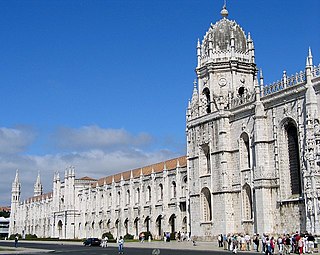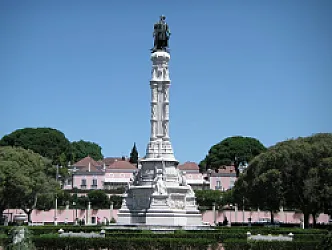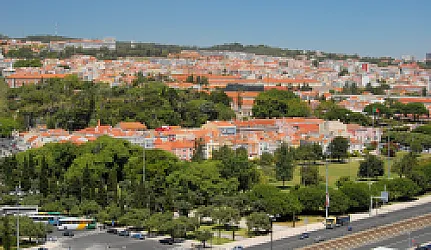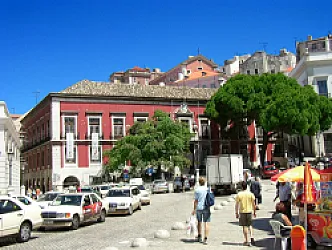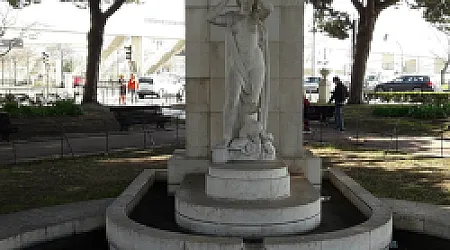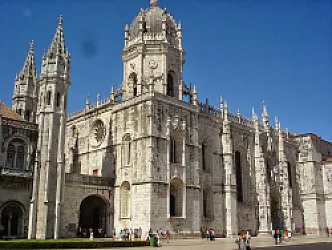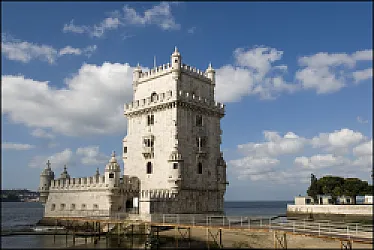Bezoek Lissabon in 2 dags
20 must-see POIs, geoptimaliseerde routes en anekdotes.
Kaart laden...
Je gaat de mooiste bezienswaardigheden van Lissabon bezoeken
2 Days in Lisbon — A love letter to the City of Seven Hills
Lisbon stole my heart the moment I stepped off the tram. Light spills over tiled facades and the air tastes faintly of salt and baked custard. They call it the City of Seven Hills, and that breathless climb is part of its charm. Some say it's overrated, but they haven't lingered on a sunset riverbank here. I return again and again, and this short guide is born from those soft, sunlit returns.
Why visit? Lisbon is more than monuments. It's the clatter of trams, the rough warmth of azulejo tiles beneath your fingers, and the low, mournful pull of fado at night. Walks here feel cinematic. You will stand at the Monument of the Discoveries and imagine explorers launching into fog. You will lose time inside the cloistered magnificence of Jerónimos Monastery. You might linger at Palácio dos Condes de Almada and feel centuries whispering through its halls. This compact city delivers sudden viewpoints, sculptural surprises, and pastries that make you grin with guilty delight.
Planning can feel overwhelming. You could easily spend weeks wandering every alley and miradouro. With just two days, choices suddenly feel urgent. I get it — there are so many options and not enough time. That’s exactly why I created this Lisbon itinerary. Below, I’ll show you how to spend 2 days in Lisbon without missing the moments that matter. Expect viewpoints, palaces, monuments, and a few secret corners.
One practical truth before we begin: Lisbon’s rhythm is slow and generous. Crowds thin early and late. Narrow streets fill midday. If this is your first time in Lisbon, you’ll want to pick times carefully. This plan focuses on the best times to visit each spot so you can savor them, not rush.
Key tip: Start early and walk light. Comfortable shoes and an early start save time and sore feet, and give you quieter views at Monument Gago Coutinho and Sacadura Cabral and Figuras femininas. Why it matters: mornings hold the best light, and Lisbon rewards slow exploration. Now let's dive into the itinerary and discover what to see in Lisbon with two unforgettable days!

Quick Mini Guide to Lisbon
Where to stay:
- Belém — best for a concentrated walk: Jerónimos Monastery, Monument of the Discoveries and riverside monuments within 10–20 min.
- Chiado/Baixa — central base for The Alchemist LISBON, shops and evening dining; easy tram/taxi to Belém.
When to visit:
- Morning for Jerónimos and Monument of the Discoveries to beat queues and get soft light for photos.
- Avoid Mondays for monuments — check opening days; late afternoon on the river for sunset over the Tagus.
Things to do (2-day plan):
- Day 1 — Belém cluster: Jerónimos Monastery, Pastéis de Belém, Monument of the Discoveries, Monument Gago Coutinho & Sacadura Cabral, and the Figuras femininas sculptures; join “Secrets of Belem” for hidden stories.
- Day 2 — Central Lisbon: visit Palácio dos Condes de Almada (check visiting hours), try the immersive “The Alchemist LISBON” interactive tour, stroll viewpoints and riverside cafés.
Don't forget:
- Comfortable shoes for cobbled streets and a light jacket for windy river breezes.
- Buy timed tickets for Jerónimos and tour slots in advance; cash/card for Pastéis de Belém line.
- Plan one sunset at the river near the Monument of the Discoveries — iconic photo moment.
Dag 1 - Lissabon
10 POIs te ontdekkenDag 1 - Ochtend à Lissabon
5 Bezienswaardigheden - Duur : 3h15 - Afstand : 13 km - Wandelen : 2h53
Monument van de Ontdekkingen
- Het monument stelt de boeg van een karveel voor met 33 belangrijke figuren uit het Portugese tijdperk van ontdekkingen op de zijkanten, zoals de navigators Nuno Gonçalves en Camões.
- Bij de ingang is het zwaard van het Koninklijk Huis van Avis afgebeeld en bij de boeg staat een standbeeld van Hendrik de Zeevaarder, die een karveel in zijn rechterhand en een kaart in zijn linkerhand houdt.Voor het monument staat een windroos met een diameter van 50 meter en een planisfeer in het midden, die de belangrijkste routes van de Portugese expansie tussen de 15e en 16e eeuw voorstelt.
- Binnen in het monument is een cultureel centrum, met een auditorium, tentoonstellingszalen en een belvedère op de top, die een prachtig uitzicht biedt over Belém en de Taag.
- Het oorspronkelijke monument werd in 1940 gebouwd voor de Wereldtentoonstelling en werd 20 jaar later afgebroken om plaats te maken voor de huidige roze stenen versie, die in 1960 werd ingehuldigd.
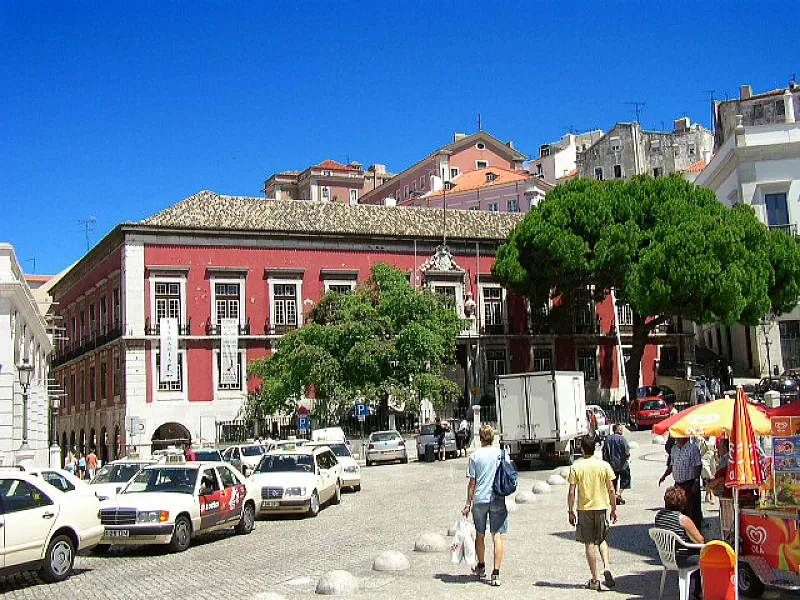
Paleis Condes de Almada (Palácio dos Condes de Almada)
- Het Onafhankelijkheidspaleis van Lissabon is een Nationaal Monument, ook bekend als het Rossio-paleis en het São Domingos-paleis.
- Het behoorde eeuwenlang toe aan de familie Almada en Abranches.
- De plaats van de Portugese Restauratiebijeenkomst, die de onafhankelijkheid van Portugal in 1640 markeerde.
- Hoewel het in het historische centrum van Lissabon ligt, heeft het Arabische architecturale elementen behouden.
- Het herbergt momenteel verschillende culturele centra, waaronder het Museum van de Restauratie van Portugal.
Mosteiro dos Jerónimos
- Het Jerónimosklooster is een iconisch Portugees klooster dat behoort tot de Orde van de Heilige Hiëronymus en de enorme rijkdom vertegenwoordigt die is vergaard door de Portugese wereldwijde exploratie.
- Het werd in 1502 gebouwd op de plek van een kluizenaarswoning die was gesticht door Hendrik de Zeevaarder.
- Het klooster is een opmerkelijk voorbeeld van de manuelijnse bouwstijl, waarin gotische elementen worden vermengd met invloeden uit de renaissance.
- Het klooster, dat de verwoestende aardbeving van 1755 in Lissabon doorstond, werd beschadigd door Engelse troepen die er tijdens de Napoleontische oorlogen waren gelegerd.
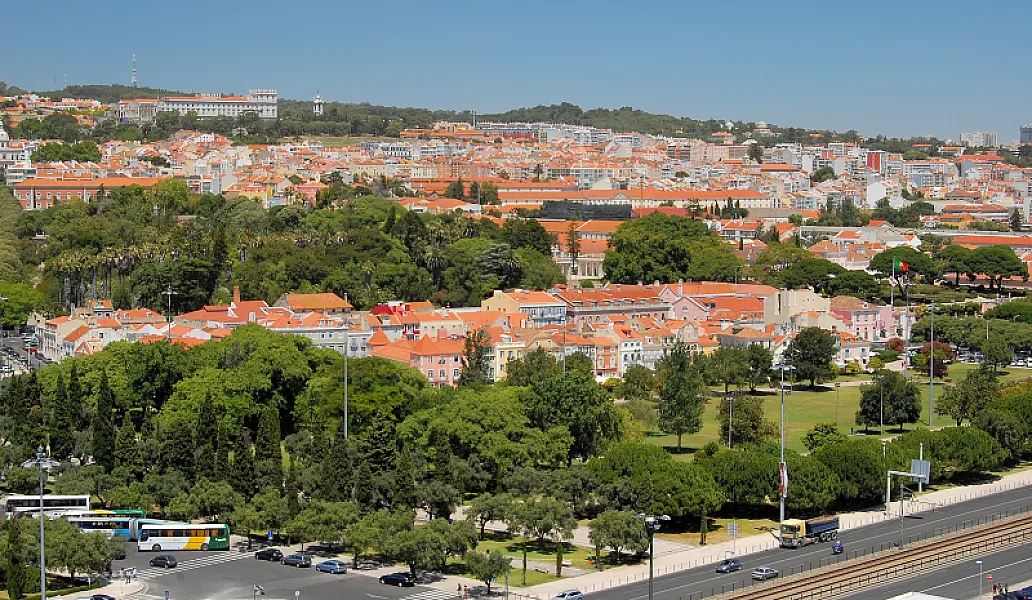
Tuin Vasco da Gama
- De tuin, aangelegd in de jaren 1980, is vernoemd naar de beroemde Portugese navigator.
- Vasco da Gama was een Portugese edelman en ontdekkingsreiziger die als eerste Europeaan India over zee bereikte.
- Zijn eerste reis van 1497-1499 bracht een directe zeeroute van Europa naar Azië tot stand, waarbij hij het zuidelijke puntje van Afrika omzeilde, zodat de zeer omstreden Middellandse Zee niet hoefde te worden overgestoken.
- Hij leidde twee van de Portugees-Indische Armada's en zijn reizen worden beschouwd als belangrijke mijlpalen in de Portugese maritieme exploratie, die het begin markeerden van een op de zee gebaseerde fase van de wereldhandel.
- Het Thaise paviljoen werd door Thailand aan Portugal geschonken als erkenning van 500 jaar betrekkingen tussen de twee landen.
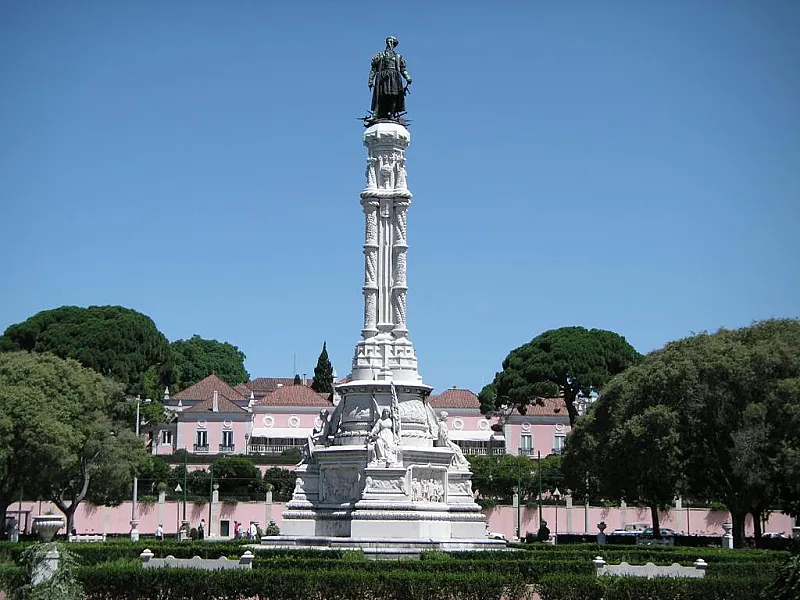
Afonso de Albuquerque-plein
- Het plein ligt tegenover het Nationaal Paleis van Belém, een 18e-eeuws gebouw dat momenteel de residentie is van de president van Portugal.
- Het is vernoemd naar Afonso de Albuquerque, de tweede gouverneur van Portugees India, en biedt een perfect uitzicht op het paleis.
- Het heeft een neo-Manuelijns monument van de kunstenaars Silva Pinto en Costa Mota tio, dat in 1902 werd ingewijd.
- Het monument heeft een bronzen standbeeld van Afonso de Albuquerque en bas-reliëfs die zijn leven uitbeelden.
Dag 1 - Middag à Lissabon
5 Bezienswaardigheden - Duur : 3h45 - Afstand : 2.9 km - Wandelen : 0h38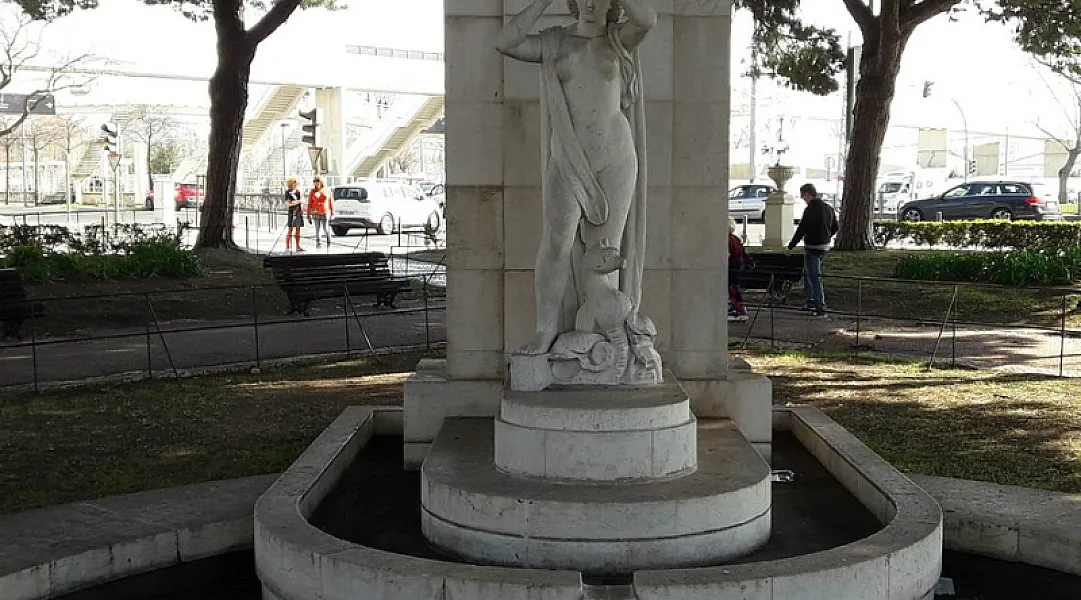
Figuras femininas
- De vrouw met het hert stelt Diana of Artemis voor, de zus van Apollo, een jageres die door Atteone werd verrast terwijl hij in de rivier aan het baden was en hem in een hert veranderde.
- De vrouw met het zeepaardje stelt Amphitrite voor, de vrouw van Poseidon, wiens zoon Nereus was.
- Zij is de vrouwelijke personificatie van het zeewater dat de aarde omringt en heeft een zeepaard aan haar voeten.
- De vrouw en de geit stelt de kleine Dionysia voor, een plattelandsfeest met wijnoffers en het offeren van een geit.

Monument Gago Coutinho en Sacadura Cabral
- Het monument is opgericht ter ere van de Eerste Oversteek vanuit de lucht van de Zuid-Atlantische Oceaan naar Brazilië in 1922.
- Het monument bestaat uit een roestvrijstalen replica van een Fairey III tweedekker, het vliegtuigtype dat werd gebruikt bij de overtocht in 1922.
- In het monument staan levensgrote bustes van Gago Coutinho en Sacadura Cabral, die betrokken waren bij de historische vlucht.
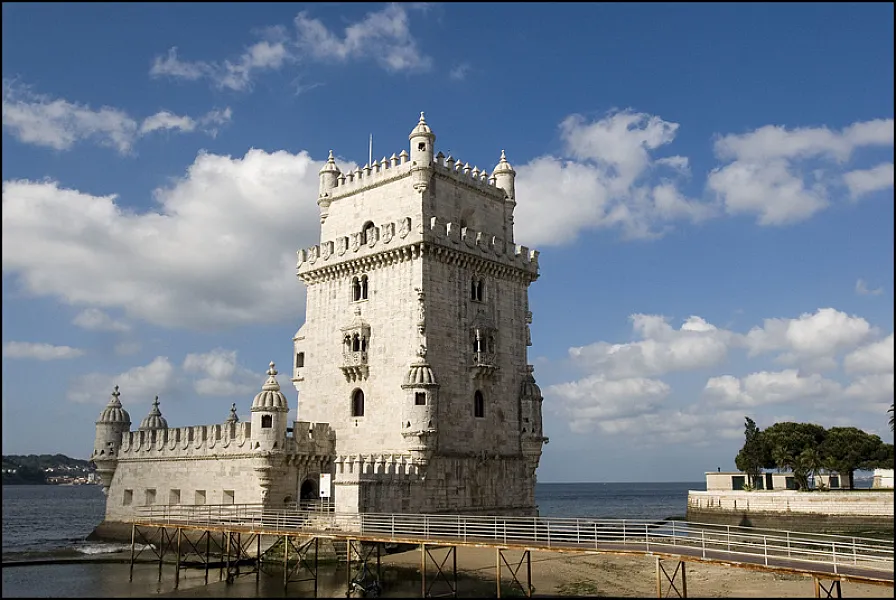
Toren van Belem
- Het werd gebouwd in de 16e eeuw, tijdens het hoogtepunt van de Portugese Renaissance, in Portugese manuelijnse stijl.
- Het fort symboliseerde de maritieme en koloniale macht van Portugal in het vroegmoderne Europa en diende als in- en uitstapplaats voor Portugese ontdekkingsreizigers en als ceremoniële toegangspoort.
- De toren is gebouwd van lioz kalksteen en bestaat uit een bastion en een 30 meter hoge toren van vier verdiepingen.
- Vaak wordt ten onrechte beweerd dat de toren midden in de rivier de Taag is gebouwd en nu vlakbij de oever staat omdat de rivier is verlegd na de aardbeving van 1755 in Lissabon.
- Maar in werkelijkheid is de toren gebouwd op een klein eiland in de Taag vlakbij de oever.
- Naast het militaire doel vierde de Toren van Belém ook de terugkeer van de Portugezen naar India en diende hij als een soort welkomstpoort voor de vloten die aankwamen bij de monding van de Taag.
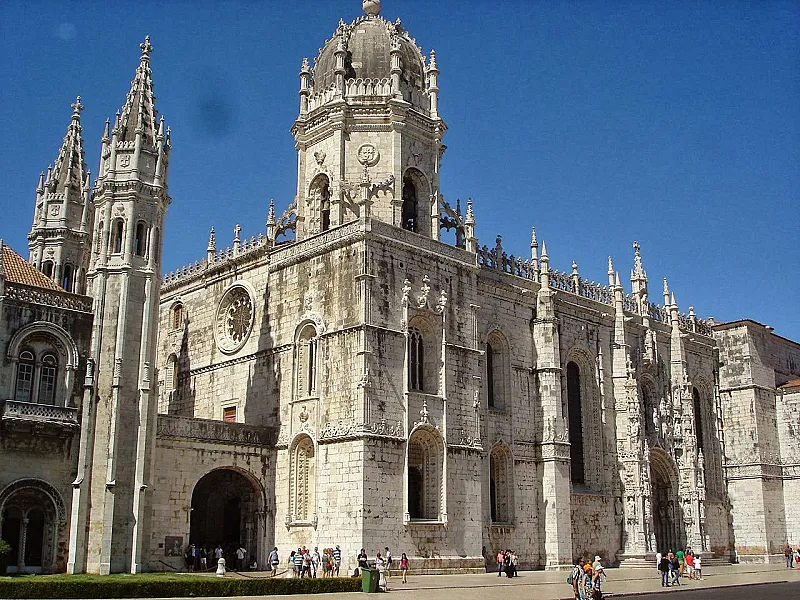
Kerk Santa Maria de Belém
- De kerk heeft een Latijns kruisplan, bestaande uit drie beuken op dezelfde hoogte, overdekt door een enorm kruisgewelf dat wordt ondersteund door zes pilaren.
- Het kruisgewelf overspant, zonder tussensteunen, een breedte van 30 meter en is "de meest complete verwezenlijking van de laatmiddeleeuwse ambitie om een zo groot mogelijke overspanning te overspannen met zo min mogelijk steunen".
- In de kapel links van het dwarsschip liggen de kardinaal-koning D.
- Henrique en de zonen van D.
- Manuel I begraven; in de kapel rechts liggen de graftombe van D.
- Sebastião en de nakomelingen van D.
- De kerk herbergt ook de graven van Camões en Vasco da Gama, van oom Costa Mota.

Memorial Espaço entre a Palavra e a Cor
- Sophia de Mello Breyner Andresen werd geboren in 1919.
- Het gedenkteken, genaamd Espaço Entre a Palavra e a Cor, toont haar gedichten aan de buitenkant.
- Het project werd ontworpen door Galeria Ratton op basis van een concept van kunstenaar Menez (echte naam Maria Inês da Silva Carmona), en benadrukt de vriendschap tussen de dichteres en de schilder.
Dag 2 - Lissabon
10 POIs te ontdekkenDag 2 - Ochtend à Lissabon
5 Bezienswaardigheden - Duur : 3h15 - Afstand : 13 km - Wandelen : 2h53
Monument van de Ontdekkingen
- Het monument stelt de boeg van een karveel voor met 33 belangrijke figuren uit het Portugese tijdperk van ontdekkingen op de zijkanten, zoals de navigators Nuno Gonçalves en Camões.
- Bij de ingang is het zwaard van het Koninklijk Huis van Avis afgebeeld en bij de boeg staat een standbeeld van Hendrik de Zeevaarder, die een karveel in zijn rechterhand en een kaart in zijn linkerhand houdt.Voor het monument staat een windroos met een diameter van 50 meter en een planisfeer in het midden, die de belangrijkste routes van de Portugese expansie tussen de 15e en 16e eeuw voorstelt.
- Binnen in het monument is een cultureel centrum, met een auditorium, tentoonstellingszalen en een belvedère op de top, die een prachtig uitzicht biedt over Belém en de Taag.
- Het oorspronkelijke monument werd in 1940 gebouwd voor de Wereldtentoonstelling en werd 20 jaar later afgebroken om plaats te maken voor de huidige roze stenen versie, die in 1960 werd ingehuldigd.

Paleis Condes de Almada (Palácio dos Condes de Almada)
- Het Onafhankelijkheidspaleis van Lissabon is een Nationaal Monument, ook bekend als het Rossio-paleis en het São Domingos-paleis.
- Het behoorde eeuwenlang toe aan de familie Almada en Abranches.
- De plaats van de Portugese Restauratiebijeenkomst, die de onafhankelijkheid van Portugal in 1640 markeerde.
- Hoewel het in het historische centrum van Lissabon ligt, heeft het Arabische architecturale elementen behouden.
- Het herbergt momenteel verschillende culturele centra, waaronder het Museum van de Restauratie van Portugal.
Mosteiro dos Jerónimos
- Het Jerónimosklooster is een iconisch Portugees klooster dat behoort tot de Orde van de Heilige Hiëronymus en de enorme rijkdom vertegenwoordigt die is vergaard door de Portugese wereldwijde exploratie.
- Het werd in 1502 gebouwd op de plek van een kluizenaarswoning die was gesticht door Hendrik de Zeevaarder.
- Het klooster is een opmerkelijk voorbeeld van de manuelijnse bouwstijl, waarin gotische elementen worden vermengd met invloeden uit de renaissance.
- Het klooster, dat de verwoestende aardbeving van 1755 in Lissabon doorstond, werd beschadigd door Engelse troepen die er tijdens de Napoleontische oorlogen waren gelegerd.

Tuin Vasco da Gama
- De tuin, aangelegd in de jaren 1980, is vernoemd naar de beroemde Portugese navigator.
- Vasco da Gama was een Portugese edelman en ontdekkingsreiziger die als eerste Europeaan India over zee bereikte.
- Zijn eerste reis van 1497-1499 bracht een directe zeeroute van Europa naar Azië tot stand, waarbij hij het zuidelijke puntje van Afrika omzeilde, zodat de zeer omstreden Middellandse Zee niet hoefde te worden overgestoken.
- Hij leidde twee van de Portugees-Indische Armada's en zijn reizen worden beschouwd als belangrijke mijlpalen in de Portugese maritieme exploratie, die het begin markeerden van een op de zee gebaseerde fase van de wereldhandel.
- Het Thaise paviljoen werd door Thailand aan Portugal geschonken als erkenning van 500 jaar betrekkingen tussen de twee landen.

Afonso de Albuquerque-plein
- Het plein ligt tegenover het Nationaal Paleis van Belém, een 18e-eeuws gebouw dat momenteel de residentie is van de president van Portugal.
- Het is vernoemd naar Afonso de Albuquerque, de tweede gouverneur van Portugees India, en biedt een perfect uitzicht op het paleis.
- Het heeft een neo-Manuelijns monument van de kunstenaars Silva Pinto en Costa Mota tio, dat in 1902 werd ingewijd.
- Het monument heeft een bronzen standbeeld van Afonso de Albuquerque en bas-reliëfs die zijn leven uitbeelden.
Dag 2 - Middag à Lissabon
5 Bezienswaardigheden - Duur : 3h45 - Afstand : 2.9 km - Wandelen : 0h38
Figuras femininas
- De vrouw met het hert stelt Diana of Artemis voor, de zus van Apollo, een jageres die door Atteone werd verrast terwijl hij in de rivier aan het baden was en hem in een hert veranderde.
- De vrouw met het zeepaardje stelt Amphitrite voor, de vrouw van Poseidon, wiens zoon Nereus was.
- Zij is de vrouwelijke personificatie van het zeewater dat de aarde omringt en heeft een zeepaard aan haar voeten.
- De vrouw en de geit stelt de kleine Dionysia voor, een plattelandsfeest met wijnoffers en het offeren van een geit.

Monument Gago Coutinho en Sacadura Cabral
- Het monument is opgericht ter ere van de Eerste Oversteek vanuit de lucht van de Zuid-Atlantische Oceaan naar Brazilië in 1922.
- Het monument bestaat uit een roestvrijstalen replica van een Fairey III tweedekker, het vliegtuigtype dat werd gebruikt bij de overtocht in 1922.
- In het monument staan levensgrote bustes van Gago Coutinho en Sacadura Cabral, die betrokken waren bij de historische vlucht.

Toren van Belem
- Het werd gebouwd in de 16e eeuw, tijdens het hoogtepunt van de Portugese Renaissance, in Portugese manuelijnse stijl.
- Het fort symboliseerde de maritieme en koloniale macht van Portugal in het vroegmoderne Europa en diende als in- en uitstapplaats voor Portugese ontdekkingsreizigers en als ceremoniële toegangspoort.
- De toren is gebouwd van lioz kalksteen en bestaat uit een bastion en een 30 meter hoge toren van vier verdiepingen.
- Vaak wordt ten onrechte beweerd dat de toren midden in de rivier de Taag is gebouwd en nu vlakbij de oever staat omdat de rivier is verlegd na de aardbeving van 1755 in Lissabon.
- Maar in werkelijkheid is de toren gebouwd op een klein eiland in de Taag vlakbij de oever.
- Naast het militaire doel vierde de Toren van Belém ook de terugkeer van de Portugezen naar India en diende hij als een soort welkomstpoort voor de vloten die aankwamen bij de monding van de Taag.

Kerk Santa Maria de Belém
- De kerk heeft een Latijns kruisplan, bestaande uit drie beuken op dezelfde hoogte, overdekt door een enorm kruisgewelf dat wordt ondersteund door zes pilaren.
- Het kruisgewelf overspant, zonder tussensteunen, een breedte van 30 meter en is "de meest complete verwezenlijking van de laatmiddeleeuwse ambitie om een zo groot mogelijke overspanning te overspannen met zo min mogelijk steunen".
- In de kapel links van het dwarsschip liggen de kardinaal-koning D.
- Henrique en de zonen van D.
- Manuel I begraven; in de kapel rechts liggen de graftombe van D.
- Sebastião en de nakomelingen van D.
- De kerk herbergt ook de graven van Camões en Vasco da Gama, van oom Costa Mota.

Memorial Espaço entre a Palavra e a Cor
- Sophia de Mello Breyner Andresen werd geboren in 1919.
- Het gedenkteken, genaamd Espaço Entre a Palavra e a Cor, toont haar gedichten aan de buitenkant.
- Het project werd ontworpen door Galeria Ratton op basis van een concept van kunstenaar Menez (echte naam Maria Inês da Silva Carmona), en benadrukt de vriendschap tussen de dichteres en de schilder.
Where to Stay in Lisbon
Location matters in Lisbon because the city is compact but famously hilly, and traffic or long uphill walks can eat into a two-day schedule. Choosing a base close to the Tagus or to a major transport hub saves time: you’ll want to be able to reach the Monument of the Discoveries and the Jerónimos Monastery quickly while still having easy access to the rest of the city for an evening stroll or a quick tram ride.
Lisbon is organised as a series of neighbourhoods radiating from the river and the downtown grid. The western riverside is where many of the big maritime monuments sit, while the central districts around the Baixa, Chiado and Cais do Sodré connect to trams, metro and trains that serve the hills. For a two-day visit, think in terms of riverfront clusters rather than individual streets: you’ll spend most of your time walking short distances or hopping on a single tram or train line.
If your priority is the riverfront monuments — the Monument of the Discoveries, the Jerónimos Monastery, the Figuras femininas and the Monument Gago Coutinho and Sacadura Cabral — base yourself in or near Belém for immediate access. For a central base that makes it easy to combine riverfront visits with historic quarters, consider staying around Chiado or Cais do Sodré, which put you a short tram or taxi ride from Belém and within easy evening walking distance of restaurants and viewpoints. If you prefer characterful lanes and fado atmospheres, Alfama keeps you close to downtown while offering a very different experience.
Transport-wise, use the yellow tram 15 or the frequent buses and the suburban train from Cais do Sodré to reach Belém quickly. Lisbon’s metro, trams and ferries are straightforward for short stays — buy a rechargeable card and plan a couple of journeys rather than trying to overbook every sight. Remember that taxis and rideshares fill in gaps late at night or when you’re carrying luggage.
For reassurance: focus on location rather than luxury when time is short. A small guesthouse or an apartment near a tram stop will give you more time on the monuments and less on transit. Check access (few old buildings have elevators), confirm arrival details, and pick a place with clear walking directions from the nearest tram or train stop — that little bit of planning keeps a busy two-day Lisbon trip relaxed and manageable.
Getting Around Lisbon
Lisbon’s public transport feels friendlier than it looks — the city leans into a compact network of trams, buses and a straightforward metro that stitches together hills and rivers. With a bit of curiosity you’ll find that the ornate yellow trams and the sleek metro are not just for photos but real, practical ways to move between neighborhoods. The system is run by a few main operators, and signage is clear; even if you don’t speak Portuguese, route numbers and station names make sense. I love how a short tram ride can turn a long walk into a scenic glide along the Tagus, and that feeling is contagious once you’ve taken your first trip. 🚇
One practical tip: pick up a Viva Viagem card as soon as you arrive. It’s a rechargeable smartcard (small fee for the card itself) that works on the Metro, buses and trams run by Carris, plus many commuter trains in the Lisbon area. You can load single fares, Zapping credit or day passes depending on how much you’ll use public transport. Keep your card handy because inspectors do check tickets, and tapping in/out is how you pay — no need to fumble for exact change on a historic tram. 🎫
Use Google Maps (or Citymapper) to plan routes in real time: it tells you which tram number to take, where to board and when to change to a metro line. If you’re headed to Belém, for example, it will often suggest the scenic Tram 15 or the Cascais train from Cais do Sodré, while rides across the old central neighborhoods usually show the faster metro plus a short walk. Google also shows live departures and platform information, which is a huge confidence-booster when stations have multiple exits on steep streets. 🗺️
To save money, compare single fares against day passes or the Lisboa Card if you plan museum visits and unlimited transport. Zapping on the Viva Viagem usually gives a reduced pay-as-you-go rate versus paper tickets, and a 24-hour pass can be worth it if you’ll hop on and off all day. Also remember that many scenic lifts, like the funiculars and Elevador de Santa Justa, take the same card or offer combined options that beat multiple taxi rides.
I remember one sunny morning when we wanted to go from the Monument of the Discoveries in Belém to the Palácio dos Condes de Almada in the city center. We took the no-fuss Tram 15 back toward Cais do Sodré, tapped our Viva Viagem, jumped off and walked a few minutes to the metro for one short stop into Baixa — the palace was an easy stroll from there. The whole trip felt seamless: scenic tram, quick metro, and a pleasant walk through squares where you suddenly felt like you belonged. That simple chain of tram + metro is my go-to whenever I show friends how accessible Lisbon really is.
What to Pack for Lisbon
Lisbon is a city made for wandering — steep hills, tiled facades, miradouros (viewpoints) and endless streets of azulejos. I’ve spent long days there (once walked about 15 miles over two days and was out for 10+ hours exploring Alfama, Baixa and Belém), so these are the practical things I always pack. Each item solved a real problem for me, so I’ll say why it matters, not just what to bring.
1. Comfortable walking shoes (required): I swear by a sturdy pair like Merrell Moab 2 or Salomon X Ultra — grippy soles for cobblestones and arch support for long climbs. On day one I climbed 200+ stone steps to a viewpoint; my friends in sneakers had sore feet by sunset. Lisbon’s streets are uneven and hilly, so the right shoes let you keep walking without pain.
2. Cross-body bag (anti-theft): I use a zipped, close-to-body cross-body bag and once had it jostled near Rossio — nothing taken because it was secure. Pickpockets can be a thing in crowded trams and tourist spots, so a bag you can see and keep in front is peace of mind while you take photos or sip a coffee.
3. Weather-appropriate clothing (layers + rain shell): Lisbon’s microclimate can flip—sunny mornings, cool breezes at viewpoints, and sudden drizzle. I pack a light merino tee, a thin fleece and a compact rain jacket. Layers meant I could enjoy a windy miradouro without freezing and still be comfortable inside cafés and churches.
4. Power adapter (Type C/F, 230V): Portugal uses the two-round-pin plugs (Type C/F) and 230V. I forgot mine once and paid hotel shop prices. Having a small travel adapter saved me from frantic searches when I needed to charge a camera battery before sunset photos at Miradouro da Senhora do Monte.
5. Power bank (10,000 mAh+): My phone hit 5% halfway through a 10+ hour day before I bought a 20€ tram ticket — not fun. A 10,000–20,000 mAh power bank will keep your phone and camera topped up for long photo sessions, navigation and ticket apps.
6. Optional extras — refillable water bottle & sunscreen / lightweight scarf: I refill a stainless steel bottle at cafés to save cash and stay hydrated on hot days; sunscreen and a hat are lifesavers in summer. A lightweight scarf is useful for chilly evenings or modesty when popping into churches.
Enjoy Your Trip to Lisbon!
In two lively days you’ll explore five highlights packed with Lisbon’s best: from the sweeping views at the Monument of the Discoveries to the elegance of Palace Condes de Almada (Palácio dos Condes de Almada) and the timeless beauty of Jerónimos Monastery. This itinerary gives you everything you need to taste history, architecture and scenic viewpoints while keeping the pace joyous and doable!
Remember, this is a GUIDE, not a strict schedule. Let yourself leave room for the unexpected: wander a side street, linger at a miradouro, or accept an invitation to a tiny café. The real magic often happens in those unplanned moments when you get delightfully lost. Don’t feel pressured to see EVERYTHING — savoring a few moments beats rushing through landmarks.
I hope you’ll embrace the lighthearted spirit of Lisbon and collect the small wonders that turn into unforgettable memories. I’m excited for you — you’re going to love the river views, the tiled facades and the gentle Lisbon pace!
Want to explore in a playful way? Check out Coddy’s gamified tours: Secrets of Belem (Lisbon) and The Alchemist LISBON. They add puzzles and stories to your walk, making discovery fun and interactive — a great option if you like games with your sightseeing!
Share your stories if you like, and ask me anything before you go. Safe travels! Enjoy!
Wil je meer avontuur?
Ontdek onze stedelijke escape games om je bezoek om te toveren tot een interactief avontuur!











